Advantages and Disadvantages of Non-Verbal CommunicationNon-verbal communication is communicating ideas without using written or spoken language. In other words, non-verbal communication is any communication between two or more people using facial expressions, hand gestures, body language, posture, and gestures. Unlike verbal communication, nonverbal communication supports the development and upkeep of interpersonal connections, whereas verbal communication primarily conveys external events. People use non-verbal hints to convey feelings and interpersonal attitudes, carry out rituals like greetings and showcase their personalities. 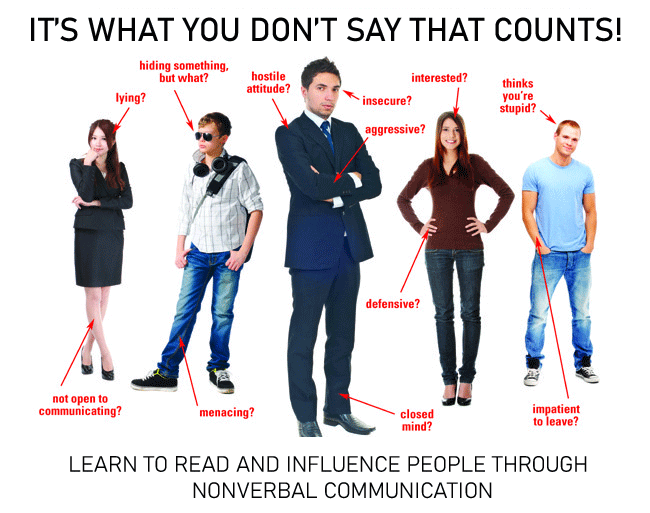
Using nonverbal cues like signals and facial expressions enhances spoken communication by adding significance. Any spoken communication is supplemented by nonverbal communication, such as nodding in agreement and waving one's hands when giving instructions. Using nonverbal cues in communication lets people exchange their emotional states and establishes the distance between them. It also controls the flow of conversation; for instance, a person can signal when he has finished speaking or wants to talk. The recipient might need help understanding what the sender is attempting to communicate and might interpret it incorrectly when nonverbals are present, which can sometimes act as a barrier to good communication. Types of Nonverbal Communication1. Facial ExpressionsFacial expressions are used to communicate nonverbally in a major way. Consider what a smile or a frown can convey. A person's expression is frequently the first thing people notice about somebody, even before they hear what they have to say. 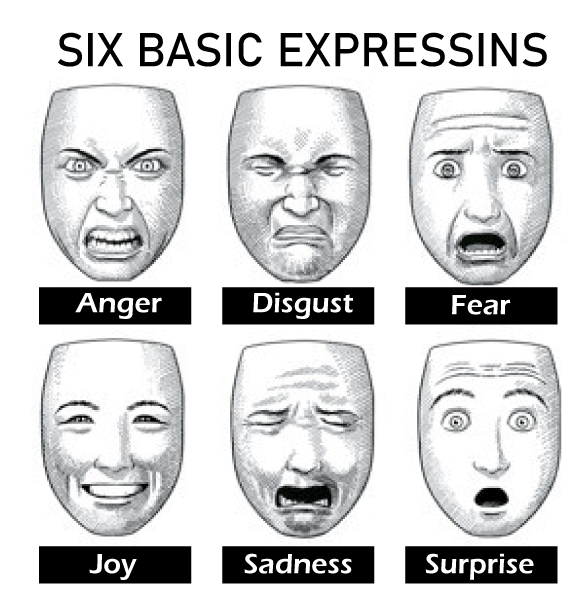
While nonverbal behavior and communication may vary greatly among cultures, emotions connected to happiness, sadness, anger, and fear are universally expressed on the face. 2. GesturesTo convey meaning without using words, deliberate gestures and signals are crucial. Hand motions are common: waving, pointing, and giving the "thumbs up" signal. Others are arbitrary and culturally based. Gestures used in nonverbal communication are so influential and powerful that some judges restrict their use in court settings where they may influence juror verdicts. For example, a lawyer can indicate that the opposing lawyer's case is tiresome by quickly checking their watch. They might even roll their eyes while a witness testifies to diminish that person's credibility. 3. ParalinguisticsParalinguistics is the study of vocal communication that is separate from spoken language. Nonverbal communication in this situation includes voice loudness, intonation, pitch, and tone. 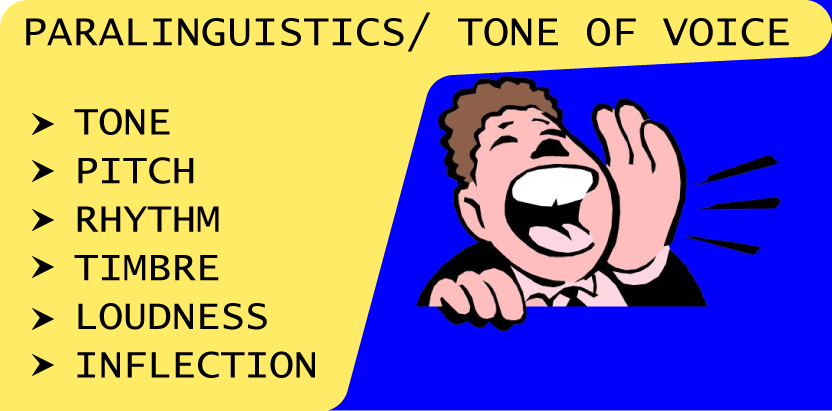
Think about the significant impact that voice tone can have on a sentence's meaning. Strong voice tones can cause a remark to sound enthusiastic and approved to listeners. The same words can express disapproval and lack of interest when used hesitantly. 4. Body Language and PostureA lot of information may also be gleaned from posture and movement. The over-interpretation of protective postures like crossed arms and legs in the media since the 1970s, especially after Julius Fast's book Body Language, has contributed to the significant growth in the study of body language. 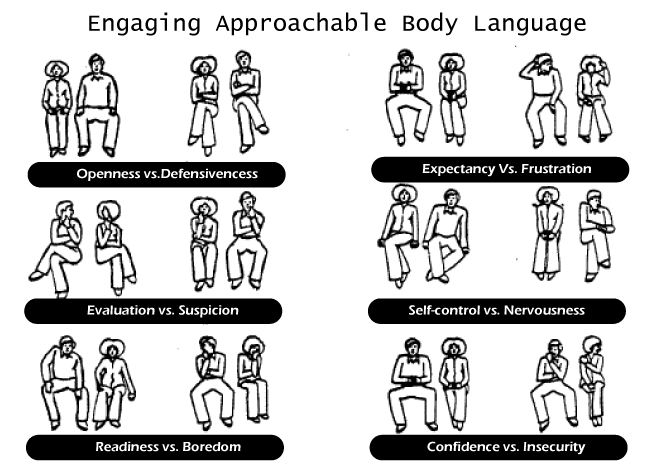
Even though these nonverbal indicators could reveal attitudes and moods, research shows that body language is far more nuanced and variable than previously believed. 5. ProxemicsPeople frequently discuss the need for "personal space." This is a crucial form of nonverbal communication that goes by the name of proxemics. 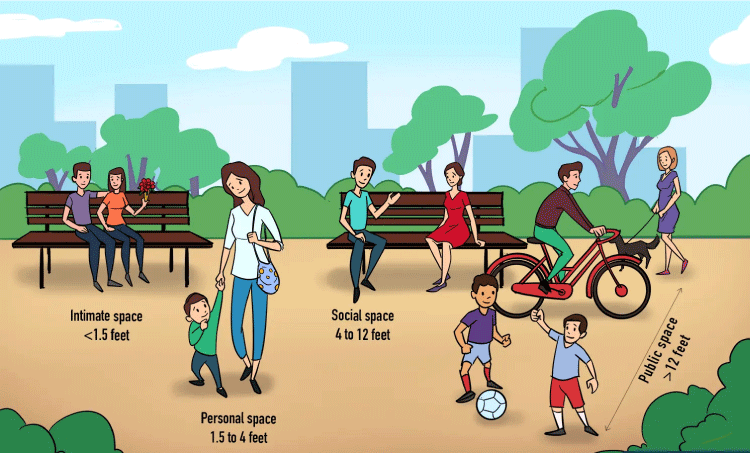
We need a certain amount of space around us, and we also view a certain amount of space as being ours. Social customs, cultural norms, contextual elements, personality traits, and degree of acquaintance are a few. 6. Eye GazeNonverbal communication involves the eyes, with indicators like staring, blinking, and glancing playing a part. For instance, when people come across individuals or things they enjoy, their blinking rate increases, and their pupils enlarge. 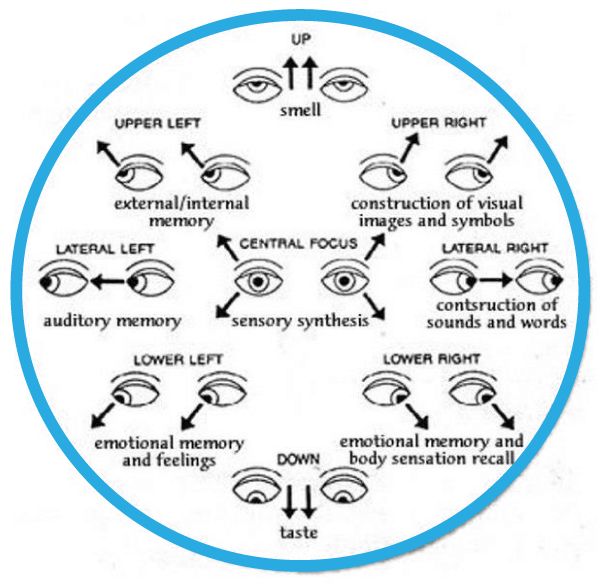
People can convey various emotions through their eyes, such as hatred, interest, and attraction. Eye contact is another method people use to assess a person's sincerity. Eye contact that is natural and consistent is frequently interpreted as an indication of integrity and reliability. On the other hand, those who have squinty eyes or have trouble maintaining eye contact are frequently thought to be lying or acting dishonestly. 7. HapticsAnother crucial nonverbal communication strategy is touch-based communication. Affection, familiarity, sympathy, and other emotions can be expressed through touch. Author Julia Wood notes that touch is frequently used to convey status and power in her book Interpersonal Communication: Everyday Encounters. 
People with higher rank tend to enter the personal space of others more frequently and intensely than people with lesser status. Differences in how people use touch to convey a message based on gender also play a part. Women frequently use touch to express nurturing, care, and concern. On the other hand, men are more inclined to utilize physical contact to exert control or influence over others. 8. AppearanceIt's also thought that our choices in clothing, hairstyles, and other physical attributes contribute to nonverbal communication. According to studies on color psychology, various emotions can be elicited by different colors. An individual's looks can impact physiological reactions, evaluations, and interpretations. Consider all the subliminal assessments made about someone based solely on their appearance. Experts advise job searchers to dress appropriately for interviews with potential employers since first impressions matter. According to research, a person's physical attributes may affect their ability to generate money. According to a 1996 study, lawyers who were considered to be more attractive than their peers made over 15% more money than those considered less attractive. How to look seen is significantly influenced by culture. While in Western societies, thinness is often admired, in some African cultures, fuller figures are associated with better social standing, wealth, and health. 9. ArtifactsObjects and images can be utilized as tools for nonverbal communication. Individuals might choose an avatar to reflect their identity and to share information about who they are and what they like, for instance, on an online forum. People frequently spend a lot of effort trying to project a certain image and surround themselves with things that give clues about what is important to them. For instance, uniforms can transmit tons of personal data about the individual wearing them. A doctor will wear a white lab coat, a soldier will wear fatigues, and a police officer will wear a specific outfit. These costumes make it clear to others what that person works for a career. As a result, they are effective in nonverbal communication. Characteristics of Non-Verbal Communication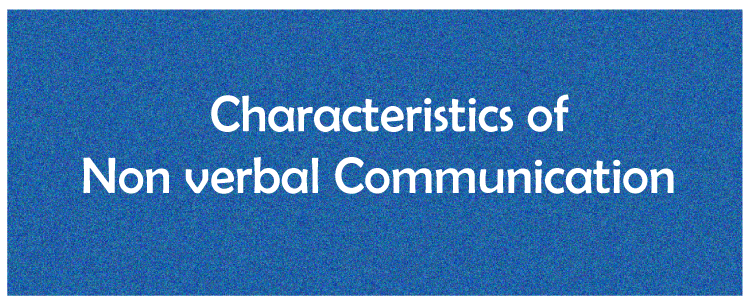
1. Nonverbal Communication Uses Multiple ChannelsWhen we communicate verbally, we only employ one channel-words-instead of several channels when we communicate nonverbally. Try out this activity. Together, say your first and last names. You realize right away that this is an impossibility. Now wave with your left hand, pat the top of your head with your right, grin, shrug your shoulders, and chew gum all at once. While silly and awkward, our capacity to do so reveals how we simultaneously use a variety of nonverbal channels to communicate. 2. Nonverbal Communication is Continuous and OngoingWhile verbal communication differs, face-to-face encounters involve continual, ongoing, and ever-changing nonverbal communication. Words have a clear beginning and finish; we can stop verbal communication by simply ceasing to speak. Nonverbal communication, however, cannot be disabled. Whether on purpose or accidentally, our posture, eye contact (or lack thereof), facial expressions, and physical appearance always convey something about us. 3. Nonverbal Communication Can Be Conscious or UnconsciousHumans typically use language or verbal communication with intention, whereas we employ nonverbal communication unintentionally. Conscious communication is communication that we consider and purposefully choose. A fundamental rule of verbal communication was taught to you as a child if you ever heard the phrase "Think before you speak." It's impossible to avoid thinking before speaking in real life. We talk knowingly and purposefully every time. Unconscious communication occurs when we talk without planning or thinking about what to say. We communicate largely nonverbally without even realizing it. For instance, you probably wait to smile and laugh when something amusing occurs. Instead, you unconsciously respond, expressing your feelings through these body language cues. Of course, not all nonverbal cues are unconsciously given. It's true that occasionally we consciously decide whether or not to employ nonverbal cues. For instance, the interviewee makes deliberate judgments about attire, posture, and eye contact before and during a job interview. Due to the unconscious nature of nonverbal communication, many of us are more likely to believe what we see than what we hear. Advantages of Non-verbal Communication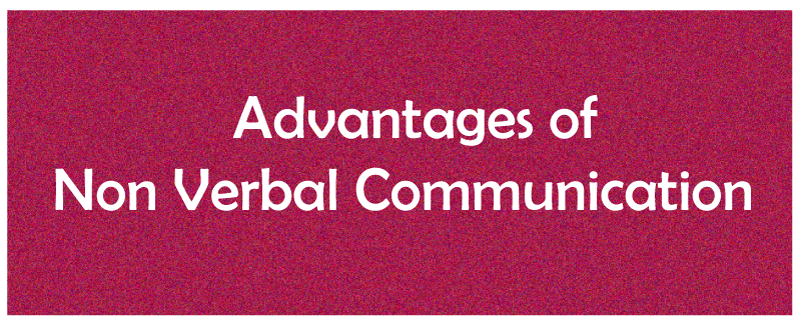
1. Complementary Nonverbal clues enhance the meaning of a vocal statement. When people apologize to someone they have offended, they can pat them on the back. 2. Easy Presentation Using silent, audiovisual, and visual nonverbal communication techniques, information can be easily delivered in nonverbal communication. 3. Substituting Nonverbal cues can take the place of verbal cues, particularly when background noise, interruption, a great distance, etc., hinder them. A few examples are putting your finger to your lips to ask for silence or nodding in place of an affirmative response. 4. Accenting Frequently used to emphasize a spoken point. The true meaning of the words is conveyed through verbal tonality. 5. Repeat Used to repeat what was spoken verbally (e.g., point in a direction while stating directions. 6. Help Illiterate People Without utilizing spoken or written words, this communication style uses gestures, facial expressions, eye contact, proximity, touching, and other physical cues. Therefore, it is quite beneficial to those who are illiterate. 7. Help Disabled People Nonverbal signs of communication are extremely helpful to people with disabilities, particularly to deaf people. Deaf people communicate by moving their hands, fingers, eyes, and other body parts. 8. Attractive Presentation Non-verbal communication relies on visual cues like pictures, graphs, signs, and other objects that are visually appealing. 9. Reducing Wastage of Time Fast delivery of the message was achieved through nonverbal communication. Because of this, it cuts down on the communicator's wasted time. 10. Quick Expression of the Message In addition to writing or speaking, nonverbal indicators of communication, like signs and symbols, can convey some messages far more swiftly. 11. Creates Effective Impact Since people are more likely to relate to feelings expressed through nonverbal communication, it is a great approach to convey emotions. Non-verbal communication is frequently more effective than verbal communication because we automatically pay more attention to non-verbal indicators such as body posture, tone of voice, and body language than vocal directives. Disadvantages of Non-Verbal Communication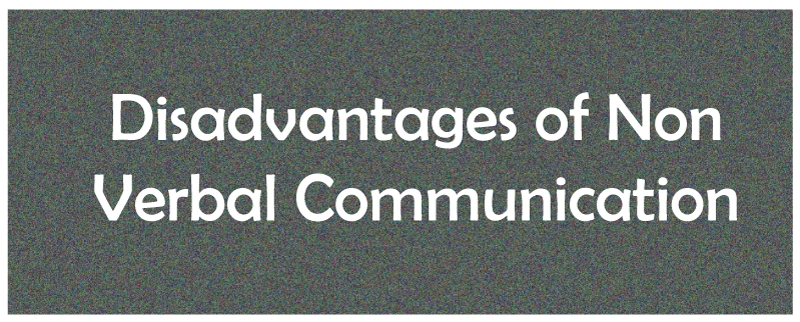
1. Vague and Imprecise Nonverbal communication can be highly hazy and ambiguous since no words or language are used in this communication to convey a clear meaning to the recipient. A dictionary cannot properly classify them. Their meaning varies depending on the intention level, culture, and situation. 2. Continuous It is feasible to pause in verbal communication, but nonverbal messages can usually not be stopped. Additionally, spoken language has a framework that makes it simpler to detect changes in a subject or to examine its grammar. Such analysis could work better with nonverbal communication. 3. Multi-Channel You might need to catch something important in a hand gesture while keeping an eye on someone else's eyes. Since everything is happening simultaneously, trying to keep up with everything may need clarification. But most of us do not, at least not consciously. 4. Culture-Bound You pick up on non-verbal communication from your parents and other people you hang out with as a child. All cultures also share other gestures. Evidence supports the idea that people from all cultures smile when they are happy and frown when they are unhappy. The majority of nonverbal symbols, however, appear to be even more disassociated from any "fundamental meaning" than spoken symbols. The thumbs-up gesture, considered favorable in the USA, may be considered obscene in another culture. 5. Long Conversations Are Not Possible Long conversations and essential clarifications are impossible with nonverbal communication. No person may talk about the specific issues raised by the messages. 6. Difficult to Understand Requires a lot of repeats in non-verbal communication and needs help understanding. Because it communicates with others by gestures, facial expressions, eye contact, touching, etc., it may be difficult for simple and ignorant individuals to grasp. 7. Not Everybody Prefers Only some people prefer to interact with others through nonverbal means of communication. It occasionally fails to leave an effect on viewers or listeners. It has less impact and isn't applicable everywhere. It cannot be used as a communication tool for the general population. 8. Lack of formality Like other forms of communication, nonverbal communication has no set norms, formalities, or structures. People often move their bodies differently to communicate nonverbally, unconsciously, and habitually. 9. Costly Nonverbal communication can be extremely expensive in some situations. For example, neon signs, PowerPoint presentations, movies, etc., are quite expensive compared to other kinds of communication. 10. Distortion of Information Since non-verbal communication involves using gestures, facial expressions, eye contact, touch, sign, sound, paralanguage, etc., to communicate with others, there is a high likelihood that some information will be misinterpreted. Despite being quite complicated, nonverbal communication is crucial to effective communication. People frequently have no awareness of their non-verbal behavior, nevertheless. ConclusionBeyond what is spoken, a basic understanding of non-verbal communication techniques can help to enhance interpersonal interactions. Understanding these indications can help people communicate more effectively and foster deeper understanding, ultimately the goal of communication. |
 For Videos Join Our Youtube Channel: Join Now
For Videos Join Our Youtube Channel: Join Now
Feedback
- Send your Feedback to [email protected]
Help Others, Please Share










